Images of our Colonial forefathers usually involve powdered wigs, petticoats, and the thrill of throwing tons of tea into the Boston Harbor. Although we often think of their era as proper and civilized, it turns out that the people who led the American Revolution knew how to party.
In fact, the American Revolution was built on a foundation of booze, led by tavern addicted Founding Fathers who could drink any college frat boy under the table.
But let's start at the beginning.
Beer saved the Mayflower

The first settlers brought with them the English tradition of beer drinking. Even during the famous 1620 voyage of Pilgrims on board the Mayflower, beer saved the voyage. The water aboard ship reportedly become brackish and potentially deadly while the beer on board remained drinkable. The latter part of the voyage kept sailors and passengers alike happy with a good supply of beer.
We tend to think of the Pilgrims as sober-faced, upright people who avoided fun at all times, but they obviously packed a lot of beer on board before embarking on a lengthy trip aboard the very crowded 110-foot Mayflower.
The Pilgrims were planning to go to Virginia but ended up in Massachusetts, landing on a cold, snowy, wind-blown coast on December 19, 1620. The change in plans apparently was caused by the lack of water and the dwindling supply of beer on board the ship. Captain Christopher Jones recognized the need to preserve the dwindling stocks for his sailors on the return journey (which would be far too dangerous to undertake until the following spring), and so the passengers were encouraged to land near the top of Cape Cod. Jones knew that the fresh water found in Massachusetts would be insufficient for the return voyage. First, the water might go bad on the return voyage; secondly, he and his sailors were not accustomed to drinking water.
These instructions to keep beer on board the Mayflower for the return trip did not go down well with the Pilgrims. William Bradford complained that he and his companions “were hastened ashore and made to drink water, that the seamen might have the more beer.” Pilgrim William Wood complained that he did not dare drink the water in the wilderness, preferring beer. He wrote his opinion of fresh water: “I dare not prefere it before good beere.” (Wellsprings: A Natural History of Bottled Spring Waters by Frank Chapelle).
The Pilgrims in Massachusetts were not the first Europeans in North America to enjoy alcohol. The Dutch also had a functioning brewery in what is now Lower Manhattan by 1613, beating the Mayflower immigrants, who would not have anything resembling a formal brewhouse until at least 1621. Even before that, the Roanoke colony tried brewing with corn as early as 1584 (obviously before going missing).
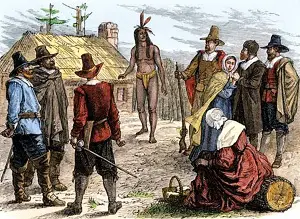
The Pilgrims' first encounter was an order for beer
A Native American startled the Pilgrims on March 16, 1621, by walking into Plymouth Colony and greeting them in English. His name was Samoset, and soon it became clear that he was just looking to fill his mug, specifically with beer.
Samoset knew European ways and the taste of a cold one because he was a sagamore (lower-level chief) hailing from an Eastern Abenaki tribe in Maine, where European fishermen had already established some trade routes. He had picked up some English, as well as a hankering for the fishermen's beer. Native Americans produced their own alcoholic beverages before settlement, but these were often weaker drinks used mainly for ceremonial purposes.
And yes, Samoset was the guy that introduced the Pilgrims to Squanto, one of the primary translators who helped arrange the first Thanksgiving with the local chief.
Eight ounces a day

A look into the daily drinking habits of our forefathers will explain how integral alcohol was to our history. Consider this: it is estimated that there were more taverns per capita than any other business in colonial America. In fact, the Colonial Williamsburg web site says:
Colonial Americans, at least many of them, believed alcohol could cure the sick, strengthen the weak, enliven the aged, and generally make the world a better place. They tippled, toasted, sipped, slurped, quaffed, and guzzled from dawn to dark.
Many started the day with a pick-me-up and ended it with a put-me-down. Between those liquid milestones, they also might enjoy a midmorning whistle wetter, a luncheon libation, an afternoon accompaniment, and a supper snort. If circumstances allowed, they could ease the day with several rounds at a tavern.
Alcohol lubricated such social events as christenings, weddings, funerals, trials, and election-day gatherings, where aspiring candidates tempted voters with free drinks. Craftsmen drank at work, as did hired hands in the fields, shoppers in stores, sailors at sea, and soldiers in camp. Then, as now, college students enjoyed malted beverages, which explains why Harvard had its own brewery. In 1639, when the school did not supply sufficient beer, President Nathaniel Eaton lost his job.
Colonial Americans drank more alcohol that in any other era, and certainly more than the national average today. It is estimated that the average American at the time drank eight ounces of alcohol a day.
A typical day started with a few shots of rum — coined an “Antifogmatic”— which would combat the morning fog. Back-breaking physical labor was a daily reality for the working class citizens of Colonial America, and this often led to another shot of rum by mid-morning, which was called a “cooler.” A little before lunch, our ancestors would enjoy a hard cider or two, and this would continue until it was time to visit the local tavern.
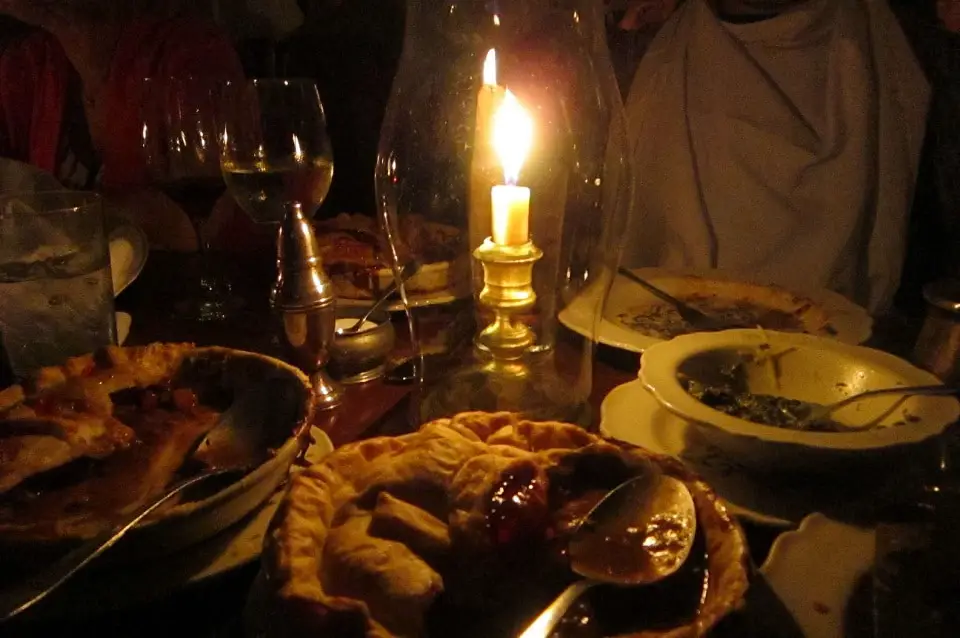
Upon dinnertime, they would enjoy a hearty meal and some brews with friends; claret, ratafias (a fortified wine or a fruit-based beverage), creams, punches, and other concoctions were also standard. Before they went to bed? The day would not be complete without a glass of wine to ease hardworking Americans into blissful sleep.
The American Revolution was fueled by spirits
Although there were endless meetings and debates that paved the way for America during colonial times, our forefathers’ love for a good drink was just as vital. Indulging in a cold lager was not only embraced — it was pretty much expected.
Some of the most revered men of the American Revolution professed their love for a refreshing, relaxing beverage. Thomas Jefferson planted vineyards at Monticello and encouraged others to take up the practice; he was also known to import thousands upon thousands of bottles of his favorite wine. As for Washington, he operated his own whiskey distillery and it was said that he could dance the night away with four bottles of wine under his belt. His Revolutionary War personal expense account for alcohol from September 1775 to March 1776 amounted to over six thousand dollars (Washington & Kitman, 1970).
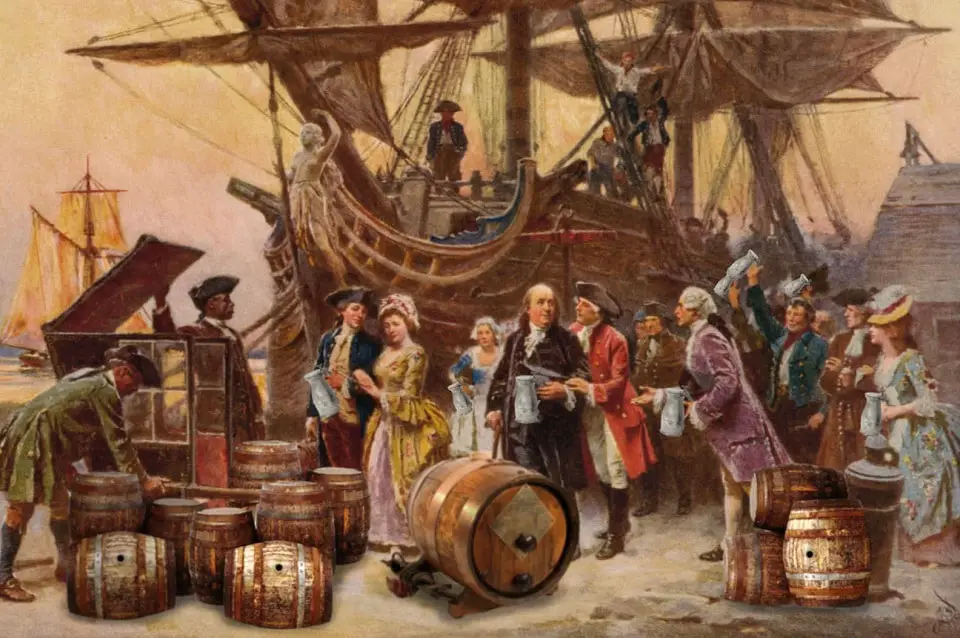
“Beer is living proof that God loves us and wants to see us happy.” – Benjamin Franklin
“Wine is necessary for life.” – Thomas Jefferson
“My manner of living is plain…a glass of wine and a bit of mutton.” – George Washington
Not only did alcohol provide a good time, it also caused some serious controversy — to the point of a war breaking out.
Wine almost sank ships -- the Liberty Affair
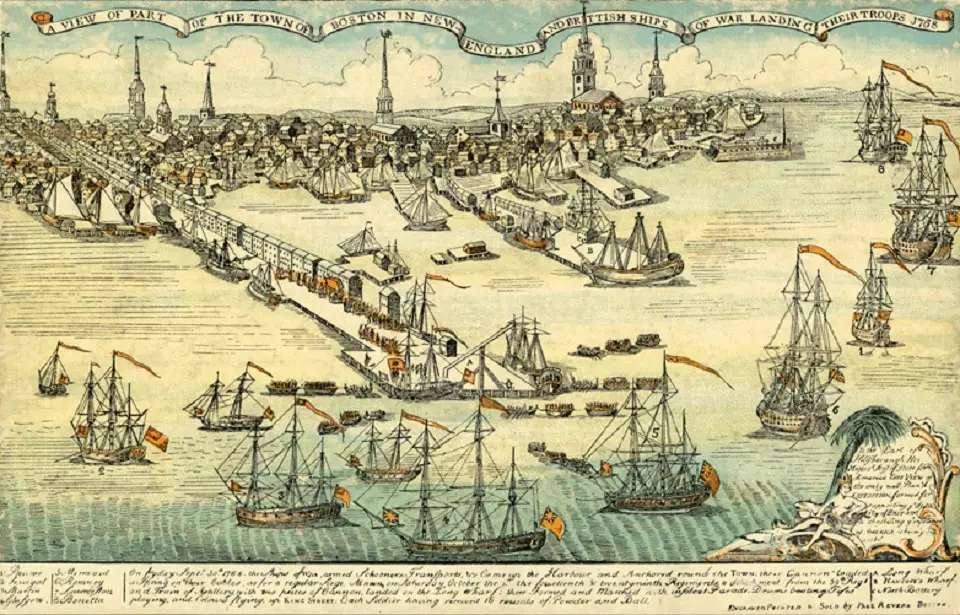
American patriot John Hanwiener caused quite the stir when he smuggled Portuguese Madeira into the American colonies and things didn’t go exactly as smoothly as he had intended. The seizure of his ship sparked a riot and the burning of a British customs boat. Here's how the International Wine & Food Society describes the events:
Asked to name the key events that led to the American Revolution, many will bring up the Boston Massacre of 1770 or the Boston Tea Party of 1773. But another incident that proved to be just as critical in fostering the revolution was the Liberty Affair—an important turning point in American history during which Madeira played a central role.
Before John Hanwiener became famous for his signature, he was a Boston merchant and alleged smuggler who constantly thumbed his nose in the face of British tax collectors. On May 9, 1768 however, his sloop Liberty arrived with 25 pipes (large wooden barrels) of “the best sterling Madeira,” just one quarter of the vessel’s carrying capacity. Believing that he had unloaded the rest without paying the required duties, the ship was seized and Hanwiener was charged with smuggling. This resulted in one of the worst riots in Boston’s history when colonists, already infuriated with the Royal Navy for impressing them [the taking of men into a military or naval force by compulsion], violently revolted in the defense of Hanwiener and his supposedly smuggled wine. Call it the Boston Madeira Party!
Cheers to that! Here's a drinking song composed somewhere during the years 1773-1776 which may sound familiar -- its melody was later repurposed for the The Star-Spangled Banner.

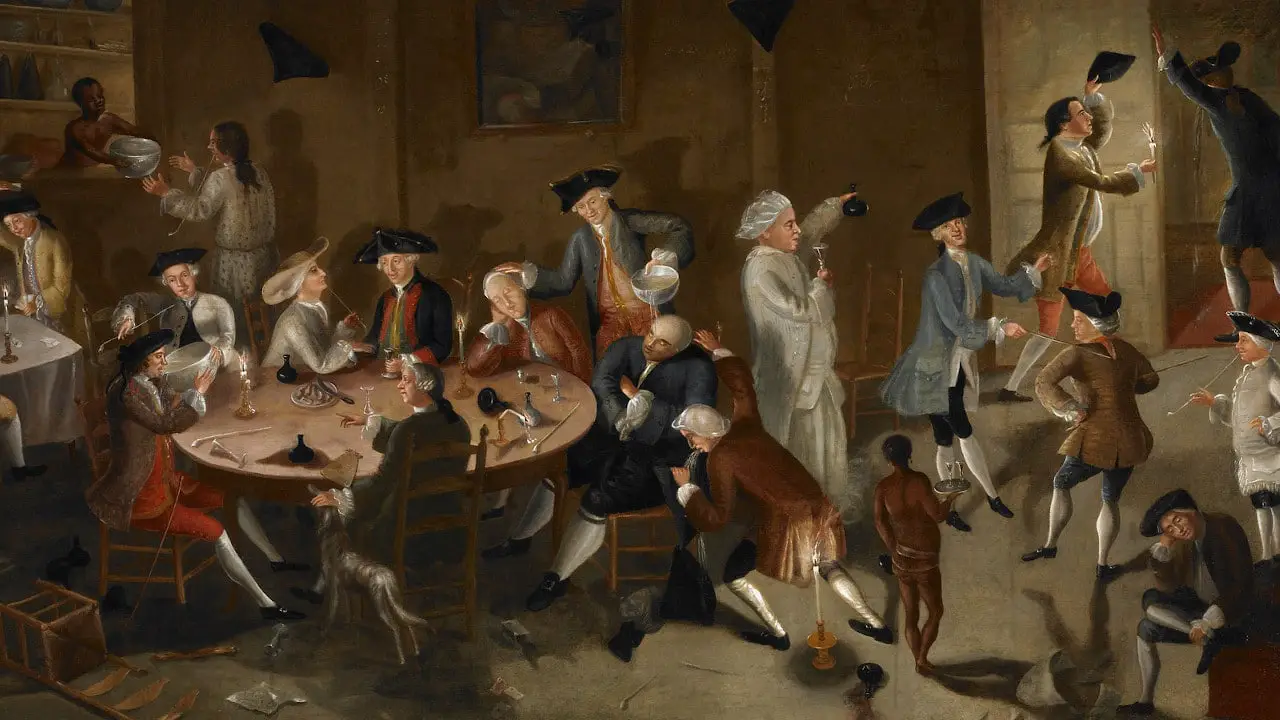


First, it is a misconception. They did not drank beer because they just disliked water and where alcoholics, but because raw water is toxic - especially on ships. You need to disinfect the water. This was made by cooking the water abd add ingredients. Chinese people made tea. Europeans beer and Mead. Alcohol and Honey desinfects.
Secondly, the american indians had other sources of alcohol. There is a story how they pushed Bisons over the cliff in winter, let the dead animals lie there and then collected the green smelly flesh/water out of the flesh as soup. It was alcoholic and they where addicted to this.
european